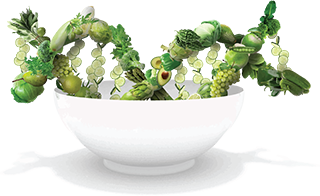This week I’m starting a 3-part series looking at nutraceuticals. By definition, nutraceuticals are ‘foods containing health-giving additives and having medicinal benefit’. In other words, they are regular foods you can add to meals and snacks that help boost your metabolism, curb your appetite, and reduce inflammation! Watch the episode above.
It should be no surprise that eating real foods in their unprocessed forms is still the best way to get all the nutrients we need. While supplements have their place – think about this – if a pill claims to have the same beneficial properties of, say an orange, how do we really know if the pill captured the same benefits from that orange? Also, how do we know if we can still retrieve the nutrients in any different form other than the orange?
We’ll start with herbs and spices known to boost metabolism. This isn’t a nod to energy drinks and those types of products. My purpose is to arm you with information about real, unprocessed foods that you can simply add to meals and snacks, whether or not you’ve prepared the food yourself.
A side note: just because we’re talking about food doesn’t mean we can’t have reactions. Personally, I’m sensitive to a host of things that are considered natural in the food supply. If things I’ll mention here or as part of this series would be new to your diets, ease into it to make sure you have no issue.
Before the list of foods, let me mention fat. In our bodies, we have white fat and brown fat. White fat, with which most of us are familiar, has large reservoirs or large areas that are capable of accepting more fat. It stores energy throughout the body and, in large quantities, can lead to obesity. Brown fat has less capability of accepting more fat and high amounts of energy-releasing components which, when activated, increase metabolism.
Now, on to the beneficial foods:
Chili peppers, like jalapeño, red pepper, and cayenne pepper, contain Capsaicin which activates brown fat. How much? When studies looked at people eating high Capsaicin foods over a period of time, they discovered the amount of Capsaicin in a small jalapeño pepper, or 1/2 teaspoon of red pepper powder, has the potential to increase metabolism by 100 calories per day. So, if chili peppers or spicy food is your thing, commit to adding sources daily, or on most days.
Peppermint, which is menthol containing, activates brown fat by exerting a ‘cooling effect’. Wait, before you run out and buy peppermint tea, the metabolic boosting effect was found using menthol topically (yeah, on the skin). An option is to add peppermint oil to your favorite hand or body lotion. Peppermint oil is made of 33 – 50% menthol. Add a tablespoon to a quarter cup.
On to vinegar (all types of vinegar) such as apple cider, red wine, white, balsamic, sherry, rice vinegar, and many more! Vinegar reduces fasting blood sugars, decreases blood sugar spikes with meals, and activates brown fat. However, too much vinegar can cause tooth erosion. Plus, we don’t know the long term effects of large doses over time. So, to play it safe, stick to culinary type dosing – 2 tablespoons a day with foods and, even better, split the dosing in half throughout the day. Use in salads, drizzled over vegetables and, my favorite use is drizzling it over fruits like strawberries or on fresh peaches after grilling them.
Lastly, barring any allergy because it’s a flower origin, hibiscus tea. It’s known for its bright red color, and tart, cranberry-like flavor (it’s the color in Red Zinger teas). It has been shown to increase metabolism within a few hours of drinking, BUT it contains high levels of the trace mineral manganese, which is toxic in large doses. So, stick to no more than 1 quart a day, which is pretty generous, don’t you think? This tea is preferred over supplements because of what I referenced earlier: we don’t know if we know enough to extract out the right ingredients for supplement forms.
Today, we’ve covered a few foods that help boost metabolism. Commit to adding one or more of them to your diet or routine. Next week, we’ll look at herbs and spices that help curb appetite.
Don’t forget to join weekly live topics on Facebook, Tuesdays, 1:00 pm CT.

